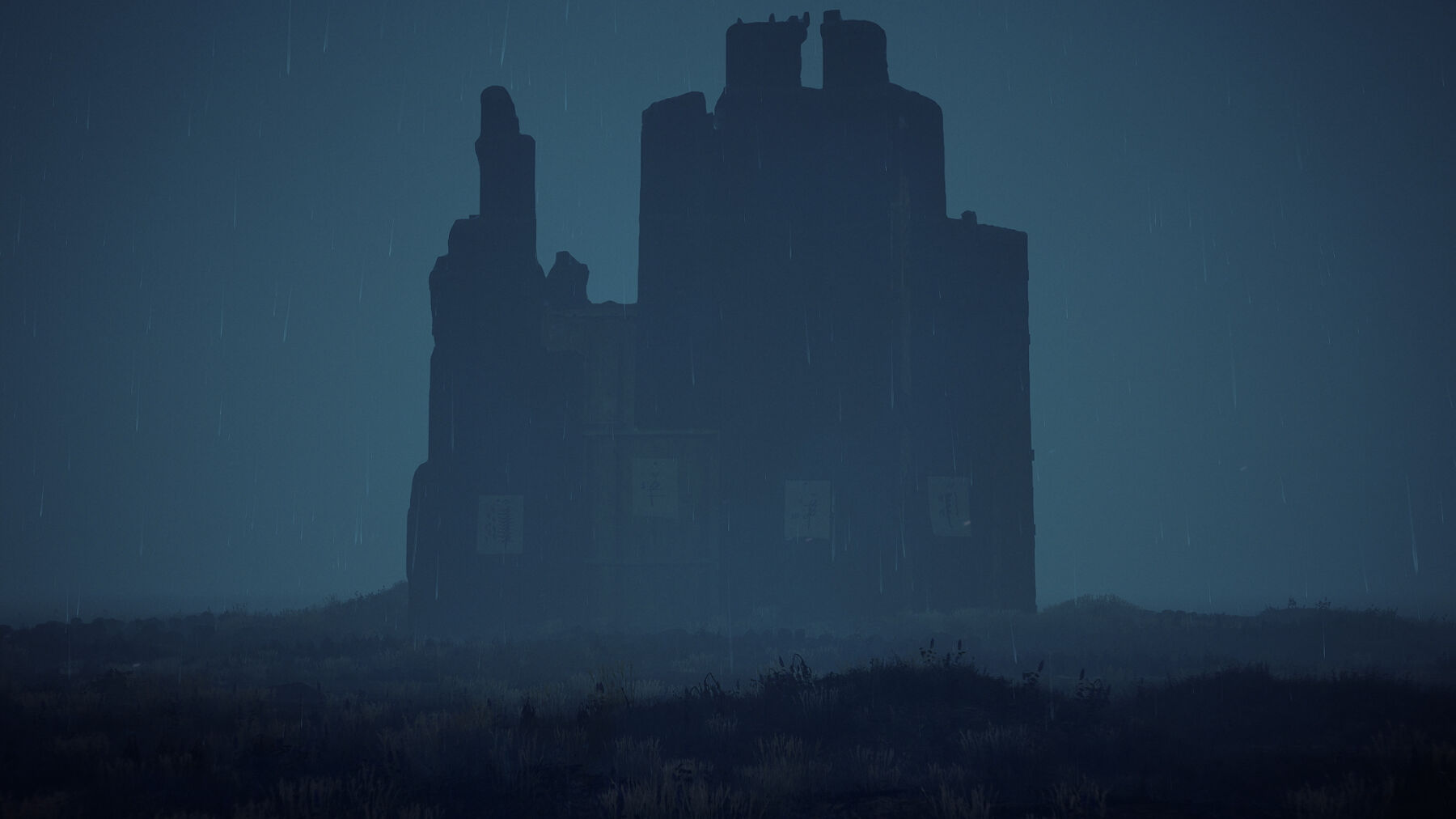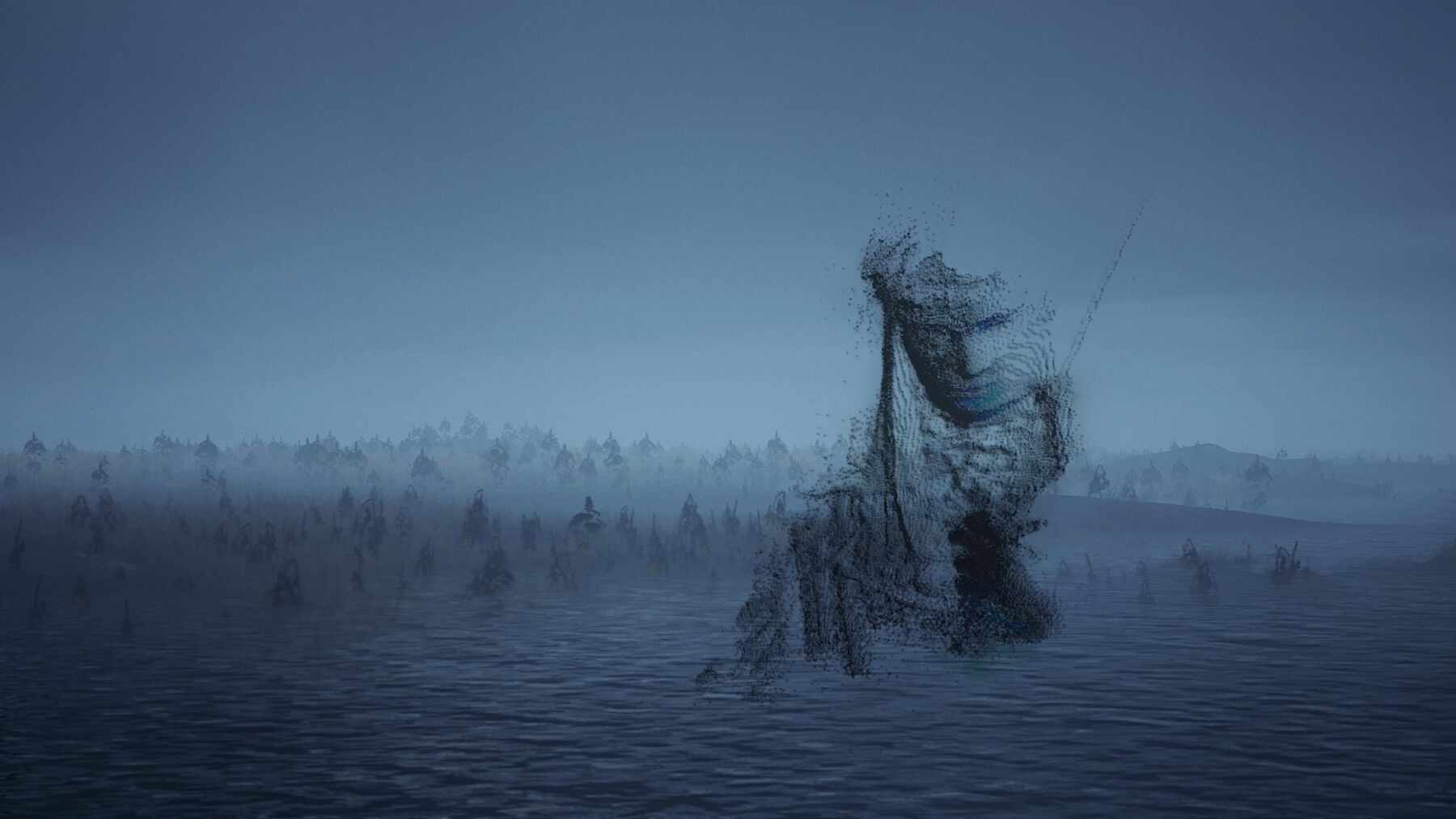Text by CLOT Magazine

Today, we introduce the enigmatic world of lil replica with their debut single and accompanying video, pyryx, released by inklingroom. The anonymous UK duo’s inaugural release unveils a mosaic of fragmented micro-chopped recordings and ethereal vocals, creating an otherworldly cluster of sounds. The self-directed video mirrors this ethereal quality, weaving sinuous moving images that capture the essence of lil replica’s uncanny universe.
The duo mentions they literally edited themselves into existence. They also make everything themselves: all sounds come from their own processes of self-imposed limitation (rejecting the limitlessness of today’s DAWs where any sound is immediately available).
In this era of the post-frivolous, what is contemporary electronic music worth if it is not a talismanic diagram, emphasising and re-emphasising its own relevance? Lil replica question.
Redux & Respair, lil replica’s debut album, embodies their creative process—a culmination of tweaking, chopping, filtering, exporting, and re-exporting free improvisations centred around voice and piano, feeding sections into now primitive AIs until something like a new musical language dropped out the other end.
But in it, glitch isn’t used to distort away from reality but instead to harness and expose the fragile beauty in human gestures. Their music emerges from intimate piano, synth and vocal improvs before being converted into digital chunks in a process of self-sampling and re-sampling.
The self-made video that we are presenting echoes this distinct musical language, which is trapped between the human/sensual and the digital/highly processed. Shuddering volumetric images convert the band into strange timeless figures, both deeply ancient yet hyper-modern. Sad elven warriors roam a bleak digital landscape, mourning a pyrrhic victory. The video and artwork show the repeated motif of an uncanny castle (itself generated through an obsolete AI from the pre-Midjourney days).
The duo offers a glimpse into their creative process while inviting readers into their collaborative journey.
Could you elaborate more on the creative process behind the video? What were the main aesthetic inspirations? And how do you think the visuals connect to the sound or help drive the track’s narration?
Espi: Xethos had hacked this Playstation to capture volumetric data, so I was performing the song in front of this rig of objects connected by cables that didn’t look or feel like a camera at all. We were embodying something futuristic but also deep in the past at the same time, which is a feeling we were experiencing and playing around with a lot on our upcoming LP, Redux & Respair. Hence, as I performed the track, this character grew out of it – someone on a journey, perhaps guarding something or keeping something alive, fighting alone through the rain. There are no real words in our lyrics, it’s all about the feeling in the sounds, so the specifics get drowned out in the broader strokes; a deep sense of loss, and resignation, but also forgiveness, love and determination.
Xethos: The video process mirrors our musical one – preserving a very ‘human’ live performance that is still very mediated, working with chance and process, and seeing what unfolds. We started with the 3D capture and added the ‘world’ later – the castle is based on our LP cover and was generated by a now redundant AI, so it is a digital ruin. People have commented that the video contains gaming and fantasy references, but it all came through following a process with the available machines. There was no great pre-planning, but it did eventually channel some of the feelings of the track – pyryx is kind of a play on Phyrric – as in the idea of a pyrrhic victory, which seemed to speak to the tragic/epic atmosphere of the song.
As a duo, how is your collaborative process overall? How do you think you complement each other’s work?
Espi: Working with Xethos is the most collaborative process I’ve ever experienced because we have really similar skillsets… usually, working with another person means they bring their skills and you bring yours, and together you explore the alien landscape that exists in the gulf between those skillsets, but with Xethos there’s nothing one of us does that the other isn’t capable of adjusting or morphing or redacting or resampling. It’s hugely liberating sometimes when we race into free improvisations together and hunt excitedly through them for assets to sample. Still, it can also be exacting and painstaking, like if you try to slip in a tiny trim to a subtle reverb buried in the mix, and it immediately gets picked up and requires justification! This level of detail keeps us both incredibly accountable for the decisions we make and has allowed us to build a shared aesthetic language, the complexity and subtlety of which I don’t think I even thought it was possible before.
Xethos: We work very closely and spontaneously. We enjoy technology but try and temper its coldness. We try and set some boundaries so we dont go down the infinite rabbit holes of technological possibilities. We hold out for a romantic quality, with and through, but also against the digital. We enjoy the disruption each other brings. Xethos is always hiding, and Espi is always there for it.
What challenges did you face during the production of the video?
Xethos: Only the usual anxieties with not following formulas or working with proper gear. Our friend Rob helped to create the beautiful wasteland, as there are far too many menus in CGI. So that took a few nights.
Espi: Because we were working with an experimental capture technique, I had to have faith that what I was doing would be picked up, and not exaggerate the gestures. It felt like how I imagine actors like Andy Serkis feel when they’re playing a CGI character. It took some getting used to, again much like a lot of the album it felt more like asset creation that would then be used to fabricate a final product.
Your use of the “glitch” is particularly interesting; as you mention, it isn’t used to distort away from reality but instead to harness and expose the fragile beauty in human gestures. Could you explain more about your interest and use (different from the usual) of the glitch to express your creative ideas and how you have translated this into the video?
Espi: A glitch in the video has a symbiotic relationship with a glitch in the music – in the music, it destabilises a track. It undercuts and delegitimises a sound’s elegance, beauty, or certainty, exposing its inherent frailty. Once those sounds get sync’d to a related visual, you’re emphasising and then RE-legitimising the track’s glitchiness. It takes something that sounds like an accidental aberration and, through duplicating it, cements it as intentional.
This back-and-forth between a sound’s intention (or pretensions) and the reality exposed by its fidelity or reproduction is one of the key things we like to play with.
Xethos: We are both on the hyperactive side, which tends to get captured in what we do. Lil Replica is about balancing gestures – for each organic move, there is a digital one, and for each flow, there is a tear. Our ‘glitches’ emerge from a process of chance – we let go as much as possible and jump about a timeline of recordings to see what juxtapositions come. Chance has a way of yielding unthinkable combinations of sound and channelling alien thoughts.






